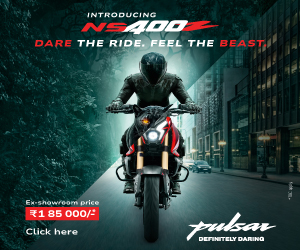
The KTM 160 Duke might just be the bike an aspiring youngster would dream of owning during his college days to show off, but does it do anything better?
Story: Anvay Mahajan
Photography: Sanjay Raikar
Back in 2017, KTM launched the second-generation 390 Duke. I was in college then and completely obsessed with that bike, wanting it more than anything else. But as a first motorcycle, my father wasn’t keen on letting me jump straight to a 390-cc machine. I eventually settled for a safer option. Still, I often thought that if KTM had offered something less powerful, maybe in the 150–160 cc range, I could have convinced him. Now, with the arrival of the KTM 160 Duke, today’s aspiring youngsters have exactly that opportunity.

Design-wise, the 160 Duke looks very similar to its bigger siblings. Despite being a European bike, it carries a devilish anime character vibe, and the bright colour options give it a youthful charm. With a seat height of 815 millimetres and a kerb weight of 147 kilograms, it’s easy to manoeuvre around a parking lot; however, the riding posture feels slightly awkward. The handlebars are upright while the foot-pegs are a little rear-set, creating an in-between stance. The mirrors are small and poorly positioned, limiting rear visibility. Even the side-stand is unusually upright, often making riders nervous about the bike tipping over to the right.

The instrument cluster is a five-inch LCD dash, which includes turn-by-turn navigation via the KTM Connect app. While functional, it does feel a little basic. A brighter screen or even a colour display would have elevated the experience, and features like call alerts would have been useful. On the positive side, the switchgear feels solid and premium, with tactile clicks.

Powering the bike is a 164.2-cc, liquid-cooled, single-cylinder engine producing 19 hp and 15.5 Nm of torque, paired with a six-speed gearbox. In contrast to the DOHC engine on the 125 Duke and the 200 Duke, this one comes with an SOHC engine. This is the first time KTM has incorporated Bajaj technology to develop an engine as a more cost-effective solution. It is refined but lacks the signature KTM exhaust note that enthusiasts might expect. It also requires a good amount of revs to get moving in first gear. In traffic, this meant I experienced a few stalls until I adjusted my throttle input. Riders may need to adapt their habits, and this constant high-rev might wear the clutch plates faster than expected.

The 160 Duke gets 17-inch alloy wheels with a 110/70 tyre at the front and a 140/60 radial one at the rear. Combined with its 1,357-mm wheelbase, it feels nimble in traffic. Suspension is handled by WP Apex USD forks at the front and a rear monoshock, tuned on the softer side. This set-up works well in the city and allows some confident cornering in the twisties, though the awkward riding posture slightly restricts body movement.

Braking performance is strong, thanks to a four-piston calliper at the front and a two-piston calliper at the rear. The switchable rear ABS is a nice touch, allowing playful slides for those who enjoy spirited riding.

The KTM 160 Duke was initially launched at Rs 1.85 lakh (ex-showroom), but its price has now been reduced to Rs 1.70 lakh. While this reduction does bring some relief, the 160 Duke still remains costlier than rivals like the Yamaha MT-15, which is also a fairly capable motorcycle. Personally, a quick-shifter would have been a great addition. Overall, the 160 Duke is aimed squarely at young riders who want a KTM badge without stepping up to the 250 or the 390. It’s stylish, engaging, and well-equipped for city use, but at this price point, buyers will have to decide if the KTM badge and design are enough to outweigh its quirks and the strong alternatives available in this segment.


Leave a Reply